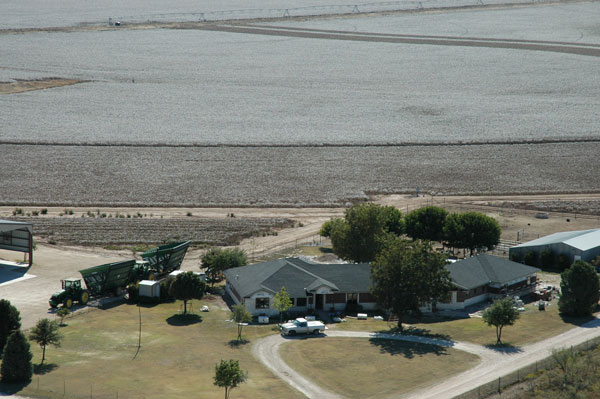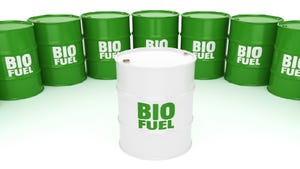
A month ago, an 80.47-acre tract of land in Iowa sold for $21,900 per acre.Larger tracts have sold for an average of $8,000-plus with some parcels going for more than $11,000.Will this year's rise continue or will declining market prices put a damper on the farm real estate market?
November 26, 2012

In recent weeks, we have seen a flurry of reports of record or near-record cropland prices across the Corn Belt.
On Oct. 25, an 80.47-acre tract of land in Iowa sold for $21,900 per acre. Earlier in that week, another parcel of prime Iowa farmland sold for $19,100 per acre.
In Nebraska, 1,855 acres were sold on Nov. 8 for $15.13 million or an average of $8,156.33 per acre with some parcels selling in excess of $11,000 per acre.
North Dakota saw an 80-acre parcel of sugar beet and potato farmland going for $800,000 or $10,000 an acre; it too was sold on Nov. 8.
This past week, Drovers Cattle Network reported Indiana and Ohio land sales ranging from $5,817 per acre to $11,194 per acre.
21.9-percent increase
A Corn and Soybean Digest article reported, “Iowa farmland prices have risen steadily in recent years. The value of tillable land jumped an average of 7.7 percent in the state over the past six months, according to a recent farmland survey released by the Iowa Farm & Land Chapter No. 2 Realtors Land Institute. The value of Iowa cropland for potential corn production increased nearly 21.9 percent over the 12 months ended in September, according to the survey.”
“North Dakota farmland values rose an average of 14 percent in 2011, according to a survey by the North Dakota Chapter of the American Society of Farm Managers and Rural Appraisers,” reported a Nov. 9 article in Prairie Business.
According to Farm and Dairy, “data from the Oho Ag Statistics Service shows an increase of 13.6 percent for bare cropland in Ohio for 2012.”
The same article said, “the Chicago Federal Reserve Bank and Purdue University both conducted surveys in June 2012 and found that cropland values in Indiana had appreciated 10 percent to18.1 percent from one year ago.”
Northern push
But it doesn’t stop there. According to a Business Week online article by Alan Bjerga, the increase in farmland prices does not stop at the US northern border; “the promise of a Canadian Corn Belt has helped push farmland values nationwide up 27 percent from 2007 to 2011, to $1,610 an acre…. The northward creep of the Corn Belt is turning Canadian farmland into a long-term investment play on global warming, says Tom Eisenhauer, president of Ottawa-based Bonnefield, a farmland investment firm that owns 15,000 acres across the country.”
In some cases in both the US and Canada, those paying these prices are neighboring farmers while in others it is people looking at farmland as an investment. In either situation, the factors driving the willingness to pay higher prices are similar:
High crop prices,
Low interest rates that make investments in bonds unattractive and the taking on of farmland mortgages at these prices possible,
A possible increase in taxes on long-term capital gains in the US provides incentives for land holders to sell land, and
Federal Crop Insurance which can provide stable returns in the case of low prices or production problems.
In addition, high prices have provided some farmers with the cash that they need to continue investing in the purchase of additional acreage.
For US northern tier and southern Canadian farmland, global warming and the introduction of new short-season corn varieties that yield well has allowed high-priced, higher-yielding corn production to supplant the growing of wheat and other small grains.
Fundamentals
At the same time, it can be argued that high land prices are driven by underlying fundamentals. In the Farm and Dairy article, “Farmland value and rent outlook 2013,” author Barry Ward writes, “with strong balance sheets in spite of the drought, many farmers will continue to be in the land buying mode. The Income Method of Capitalization, an appraiser’s method of valuing assets, yields high land valuations based on 2013 projections for returns to land and interest rates….
“For example, using a $287.50 per acre ‘return to land’ (the midpoint of the projected soybean ‘return to land’ for 2013) and a 4-percent capitalization rate, farmland would be appraised (valued) at $7,187.50 per acre.”
Others are not so sure. In a New York Times article, “Across Corn Belt, Farmland prices keep soaring,” authors Ron Nixon and John Eligon write ��“two Fed surveys and sales data have raised concerns from bank regulators about a potential farmland bubble, similar to the housing frenzy that helped set off the financial crisis. A year ago, rising farmland prices prompted regulators to warn banks not to relax lending standards. In July, the Kansas City Fed held a symposium to discuss concerns about a bubble.
“‘Any time you have an asset that doubles in value over a decade, there is cause for concern about how sustainable that growth is,’ said Richard A. Brown, chief economist at the Federal Deposit Insurance Corporation.”
Whether current land prices are sustainable or a bubble largely depends on whether recent factors that have positively affected land price increases continue into the future. Interest rates are unlikely to go into the stratosphere in the near future, and there will always be farmers looking add acreage to their farms.
The critical question marks are future crop prices and the ability of revenue insurance to help offset lower grain prices. What if the US produces 3.5-billion to 4-billion additional bushels of corn in each of the next couple years? This could easily happen if corn yields return to trend levels and farmers plant the corn acreage they brought into production the last couple of years.
That would not be a problem if there is a corresponding jump in demand. But demand prospects look much different from what was experienced in the previous five years or so. Clearly corn demand for ethanol will not repeat the explosive growth of earlier years. High feed prices and widespread drought have destroyed a significant portion of prospective livestock feed demand and US exports are likely to be affected as much by our export competitors supplying additional grain as importers demanding more grain.
Revenue insurance provides farmers nearly a “home free” card when crop revenue drops during—or just following—times when grain prices are abnormally high, but provide little to no meaningful protection during extended periods of severely depressed prices.
Two or three years of 14-billion- to 15-billion- bushel corn crops would most likely cause prices to be severely depressed. Since it is unlikely that revenue insurance could be the savior it has been this year and given the political climate for the next farm bill, it is very possible that net income in the years ahead will not support current land prices, let alone further increases in land prices. Then again with continuing weather-based yield shortfalls and the resulting high crop prices…
Daryll E. Ray holds the Blasingame Chair of Excellence in Agricultural Policy, Institute of Agriculture, University of Tennessee, and is the Director of UT’s Agricultural Policy Analysis Center (APAC). Harwood D. Schaffer is a Research Assistant Professor at APAC. (865) 974-7407; Fax: (865) 974-7298; [email protected] and [email protected]; http://www.agpolicy.org.
You May Also Like



